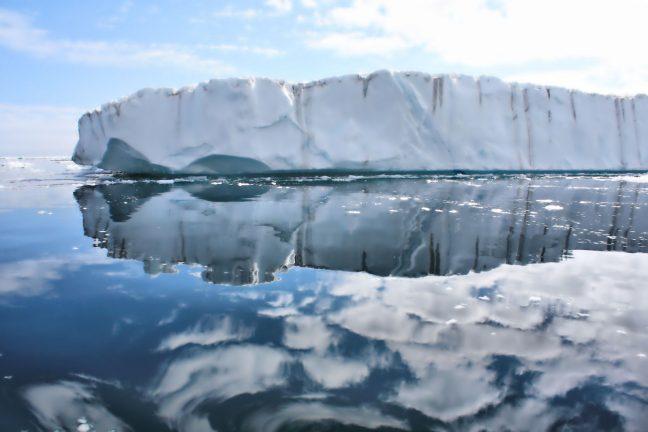Many people are interested in knowing about the different extremes of the world, be it the highest peak, the lowest trench or the hottest, coldest and windiest places on the Earth.
Some University of Wisconsin researchers are working on feeding this curiosity through their research on Antarctica’s extreme temperatures.
The World Meteorological Organization Commission for Climatology set up a committee to evaluate Antarctic temperature measurements and establish the highest temperature extremes of the region. Researchers working with UW’s Antarctic Meteorological Research Center were an integral part of this committee. They recently published a study evaluating the Antarctic region’s highest temperature extremes.
Randall Cerveny, research professor at Arizona State University and rapporteur at the World Meteorological Organization, said the highest temperature extreme was recorded in Death Valley, a national park which spans from eastern California to Nevada, and the lowest temperature extreme was recorded in Antarctica. Knowing the extreme temperatures is not just a fascinating piece of information but it helps scientists understand regional and global climate change.
“We have gone from a 134 F above zero to a 128 F below zero,” Cerveny said. “That’s the realm of our planet in terms of its temperatures.”
Though it is good to know the lowest temperature records, the highest temperature records are becoming more relevant in the wake of climate change. Cerveny, who essentially put the committee together, said it was important to have representatives from various countries.
About 15 climatologists and meteorologists from the U.S., United Kingdom, Argentina, Spain and New Zealand, who specialize in the Antarctic region worked on this project, which started in 2015.
UW has about 60 automatic weather stations operating in Antarctica, Matthew Lazzara, an associate researcher working with AMRC, said. That is about half the total number of automatic weather stations operating in Antarctica. These stations can collect data by themselves and are unmanned.
A number of different institutes and nations own the rest, Lazzara said.
“So [UW’s contribution is] a big effort, it’s a huge impact, it’s a big deal,” Lazzara said.
Lazzara said there were three major outcomes of the project.
Before the study took place, the WMO did not officially recognize Antarctica as a separate region. After the study, the committee was able to formulate its current definition, which is the land and ice shelves below 60 degrees south latitude, Lazzara said.
The study also divided Antarctica into subregions based on their distinct climate system. Lazzara said the Antarctic Peninsula is a slightly warmer, low-lying ice sheet and continent while the Antarctic Plateau is the elevated, relatively colder region.
Lazzara said the study established highest temperature extremes in these different subregions. Researchers investigated and evaluated data and records from various weather stations in Antarctica. The data the committee reviewed and verified helped them establish the record high-temperature extremes in different years.
The Signy Research Station established the highest temperature in the region in 1982. This British weather station, located close to 60 degrees south latitude, recorded a balmy 67.6 F. The study concluded the northernmost region of Antarctica is the warmest in the region.
According to data from the study, the high-temperature extreme recorded on the Antarctic Peninsula further south of Signy Station was 63.5 F. The Argentine research base Esperanza recorded this temperature in 2015.
An automatic weather station called D-80, located on the Antarctic Plateau, recorded the high-temperature extreme in 1989. This record was set at 19.4 F.
Lazzara said these highest temperature records do not signify climate change but can help scientists understand climate change in the future. Aside from indicating unusually high temperatures, the meteorological phenomena behind these records were normal, he said.
Lazzara and his team found these extreme highs were due to a phenomenon known as warm air advection. This is the horizontal transfer of heat in the atmosphere or over the sea. The solar heating under clear skies at a high elevation, where the D-80 automatic weather station is located, was a major contributing factor to the record temperature.
Results from the study have other implications as well, Cerveny said. It can help researchers understand what kind of climate buildings would need to withstand. Moreover, information on temperatures in Antarctica will help researchers know how to prepare for work in such a region.
Moving forward, keeping an eye on any changes in the set records will be crucial to understanding climate change, Lazzara said.
Carol Costanza, who works at AMRC and manages the data inflow, said the project would contribute to WMO’s records.
“This was a rewarding project in that we were able to provide a record that will be recorded by WMO in their archive,” Costanza said.


